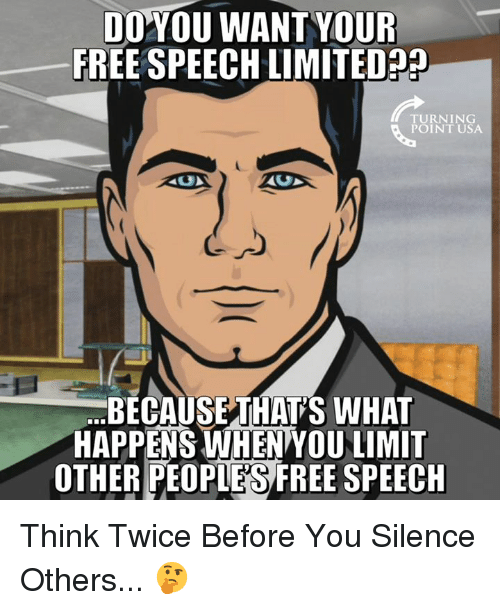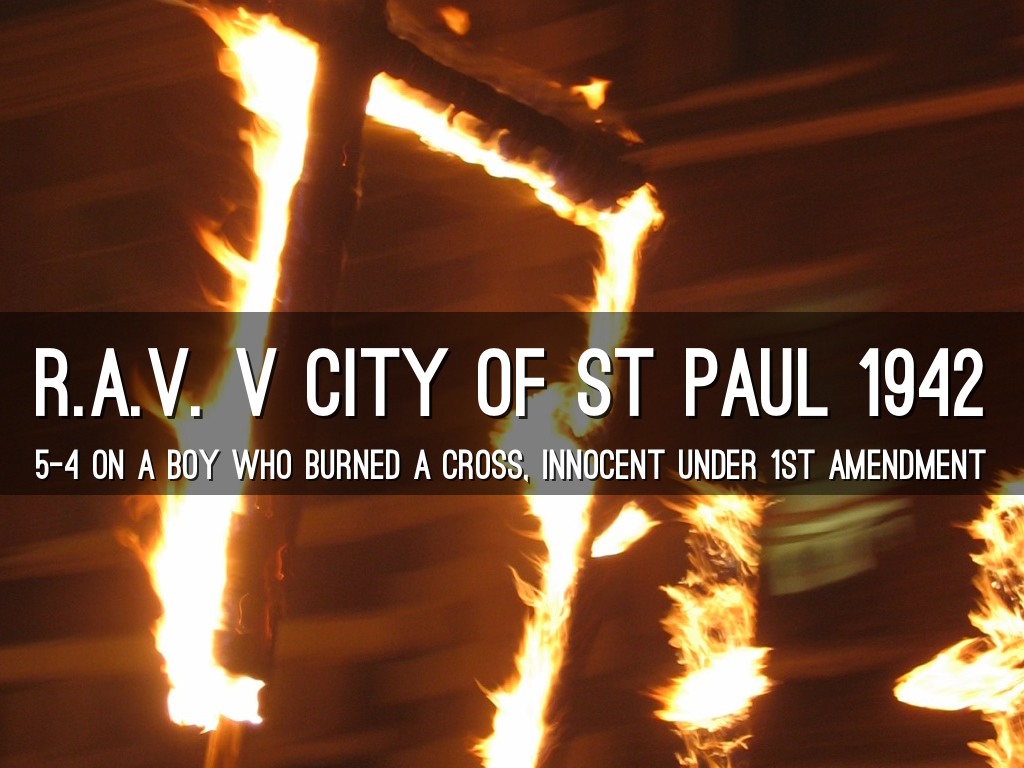When it came to caucasian kids burning a cross on a family of African American’s property, R.A.V v. St. Paul said, essentially, hate speech is ok, because it’s a First Amendment right of free speech.
Now, here’s the facts of R.A.V v. St. Paul (1992). The city of St. Paul had a bias motivated crime ordinance which the Supreme Court found unconstitutional, because it went overboard and was content based.
Here’s the issue. Was St. Paul’s ordinance too broad and content based?
The Supreme Court ruled this way. The Supreme Court said content based restrictions and point-of-view restrictions are invalid; therefore, laws banning activity based of content or laws based on point of view are unconstitutional.
That being said, if the Court ruled against R.A.V, the Court would of reversed a precedent set in Snider v. Phelps. If one remembers, Snider v. Phelps said a Baptist church can protest a soldier’s funeral in a peaceful manner. The Supreme Court considered funeral protesting a First Amendment right, and the Court did not want to further narrow or limit the right of speech in the First Amendment.

Furthermore, the Court wasn’t willing to follow the “fighting words” doctrine as outlined in Chaplinsky v. New Hampshire 1942 (A case involving Jehovah Witnesses). The Court didn’t want to set a bad precedent by following the fighting words doctrine. It should be mentioned, too, if the Court had affirmed the fighting words doctrine, these kids could of been knocked out for burning a cross on the African American family’s property. Nonetheless, the Court said the fighting words doctrine did not qualify as protected speech and was outdated.
As well, the Court did not follow the path of trespass law to prosecute these kids. This case is unclear why the Court didn’t follow this path; however, if such a path was followed to prosecute these kids, the state would have to pursue this path. However, it should be said that R. A. V (a minor) would of appealed on any path in hopes of getting off on charges at the Supreme Court level.
Today, it can be said, the USA does not have any hate speech laws. The USA wants a robust and broad interpretation of the First Amendment
right of speech; nevertheless, this comes as better or worst for Americans. Hate speech laws do not exist in the USA (Unlike Canada and the UK).

However, the rest of the world believes in a narrow intepretation of free speech. For example, in some countries, you can be thrown in jail for showing any hatred or animus toward a religion. Also, in some countries, you can be thrown into jail if you post racists tweets on Twitter. Consequently, unlike other countries, you can post racist tweets since the USA has a broad interpretation of the First Amendment right of speech.
Nevertheless, there are ways to narrow speech in the US. Some of these ways include hostile learning and work environments, which an employer can fire an employee because he/she contributed to a hostile learning or work environment. That being said, some say, if Hilary Clinton won the 2016 election, free speech would of been furthered narrowed; however, the conservatives have plans to limit speech in the near future for their own reasons.
In conclusion, simply, it must be said, I enjoyed this case. It highlights the good and bad points of the First Amendment. You can say or do anything, but at the same time, free will can be a bitch. This case teaches you the evils of free speech.
